농업 주물 : 품질, 선택 및 성능
2025-04-27 16:29:39 적중 :0
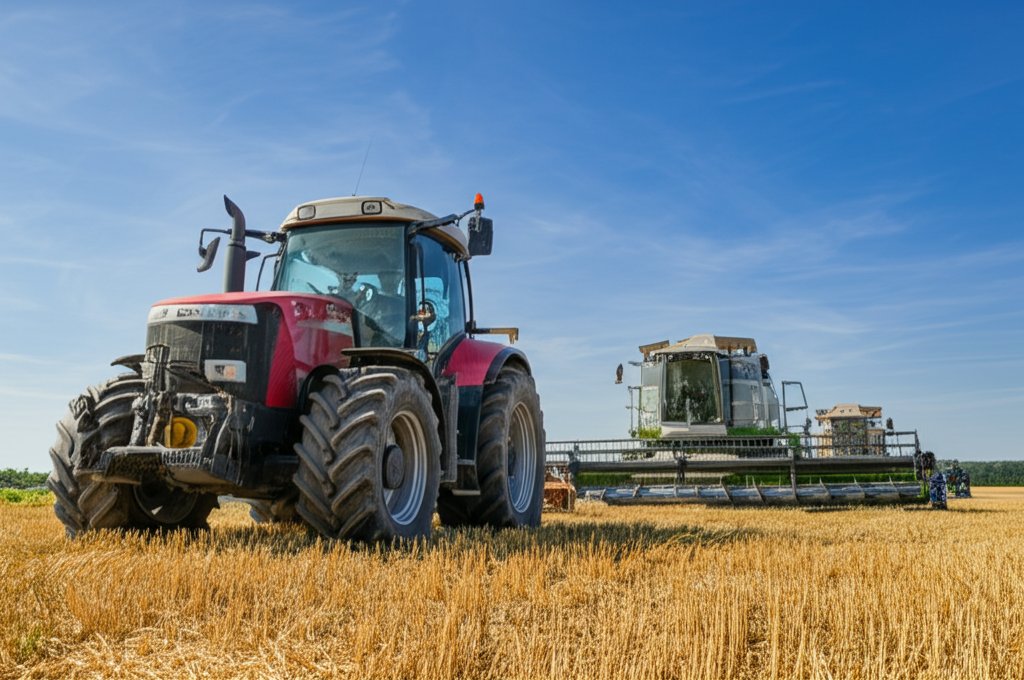
농업 주물이 현대 농업의 중추 인 이유
성수기 동안 거친 토양이나 수확기를 통해 쟁기질을하는 트랙터를 묘사 할 때,이 기계가 무엇을 안정적으로 실행하는지 궁금한 적이 있습니까? 대답은 종종 핵심 구성 요소의 품질, 특히 농업 주물의 품질에 있습니다. 이들은 현대 농업의 까다로운 조건을 견딜 수 있도록 설계된 캐스팅 프로세스를 통해 생성 된 맞춤형 금속 부품입니다. 그러나 왜 그렇게 필수적이며, 구매자가 품질에 세심한주의를 기울여야하는 이유는 무엇입니까?
농업 주물이란 무엇이며 왜 중요한가?
농업 주물은 용융 금속을 모양의 금형에 붓는 것으로 형성된 금속 부품을 말한 다음,이를 굳어집니다. 이 방법은 농장 기계에서 발견되는 복잡한 고강도 구성 요소 (고정 하우징, 브래킷, 레버, 기어 박스 등)를 생산하는 데 널리 사용됩니다. 이 부분은 가혹한 환경에 대한 지속적인 진동, 충격 및 노출을 견뎌야하므로 농민 및 장비 제조업체 모두에게 내구성과 정밀도가 협상 할 수 없습니다.
능률: 고품질 농업 주물은 기계 다운 타임을 줄이고, 심각한 심기 또는 창문을 수확하는 동안 운영을 원활하게 실행할 수 있습니다.
내구성: 정밀 엔지니어링 주물은 마모, 부식 및 피로에 저항하여 기계의 수명을 연장하고 대체 비용을 낮추는 것입니다.
신뢰할 수 있음: 일관되고 잘 만들어진 주물은 예상치 못한 고장을 방지하고 농장의 생산성과 수익성을 보호하는 데 도움이됩니다.
단일 결함이있는 부분의 영향을 상상해보십시오 : 깨진 기어 박스 또는 마모 된 하우징은 전체 작업을 중단하여 시간이 손실되고 비용이 더 높아질 수 있습니다. 그렇기 때문에 캐스팅 품질이 운영 성공과 직접 관련이 있습니다.
이 기사는 무엇을 다루게됩니까?
정보에 근거한 결정을 내릴 수 있도록이 가이드는 다음을 탐구합니다.
농업 주물이 무엇인지 농가에서 어떻게 사용되는지
주요 자료- 철 및 강철 합금과 같은 성능에 영향을 미칩니다
제조 공정 투자와 모래 주조처럼
일반적인 응용 프로그램 트랙터, 수확기 및 경작 장비를 가로 질러
올바른 공급 업체를 선택하는 방법 캐스팅 품질을 보장합니다
장비 제조업체, OEM 또는 대규모 재배자이든, 캐스팅 품질과 장비 신뢰성 사이의 연결을 이해하면 수익성에 상당한 차이가 생길 수 있습니다. 이 기사를 살펴보면 올바른 농업 캐스팅 솔루션이 다운 타임을 최소화하고 비용을 통제하며 장기적인 성공을 유도하는 데 어떻게 도움이되는지 알게됩니다.
농업 주물은 정확히 무엇입니까?
왜 그렇게 많은 중요한 농가 부품이 다른 방법 대신 캐스팅을 사용하여 만들어 졌는지 궁금한 적이 있습니까? 무거운 트랙터 구성 요소 또는 정밀 파종기 괄호를 조사한 경우 농업 캐스팅 결과가 가까이있는 것을 볼 가능성이 있습니다. 그러나이 과정을 구별하는 것은 무엇이며 왜 캐스트 농업에서 널리 사용 되는가?
농업 주물 정의
핵심에서, 농업 캐스팅은 용융 금속을 맞춤형 금형에 붓고 단용화 할 수 있도록하는 금속 부분입니다. 이 접근법은 간단한 하우징에서 현대 농장 기계에서 사용되는 복잡한 기어 박스 및 레버에 이르기까지 모든 것을 만들 수 있습니다. 솔리드 블록으로 절단되거나 가공되는 부품과 달리 주물은 금형에 직접 형성되어 놀라운 설계 유연성 및 재료 효율성을 가능하게합니다.
농가에 캐스팅이 선호되는 이유
그렇다면 제조업체는 왜 많은 농업 구성 요소의 캐스팅을 전환합니까? 답은이 프로세스가 제공하는 독특한 장점, 특히 단조 또는 제작과 같은 대안과 비교할 때 제공됩니다. 알아 차리는 것은 다음과 같습니다.
복잡한 형상 : 캐스팅은 복잡한 모양, 내부 공동 또는 중공 섹션이있는 부품을 쉽게 생산할 수 있으며, 불가능하지는 않지만 가공이나 단조로 달성하기 어려운 부분을 쉽게 생산할 수 있습니다. 복잡한 하우징 또는 다기능 괄호를 생각해보십시오. 캐스트는이를 쉽게 처리합니다.
강도와 내마모성 : 농업 주물은 높은 압축 강도와 일정한 진동, 충격 및 연마 조건을 견딜 수있는 능력으로 유명합니다. 이것은 토양, 암석 및 거친 현장 작업에 노출 된 구성 요소에 중요합니다.
생산량에 대한 비용 효율성 : 툴링 비용이 낮고 부품을 빠르고 효율적으로 생산할 수있는 능력 덕분에 캐스팅은 특히 중간 정도에서 중간 정도의 생산 실행에 경제적입니다. 이것은 농업 장비 제조업체의 다양하고 때로는 맞춤형 요구에 이상적입니다.
재료 다양성 : 이 공정은 광범위한 금속 및 합금을 지원하므로 설계자는 철, 강철 또는 알루미늄 등 각 응용 프로그램에 가장 적합한 재료를 선택할 수 있습니다.
캐스팅은 단조 및 제조와 어떻게 비교됩니까?
제조 옵션을 평가할 때 다른 방법에 비해 주조가 어떻게 쌓이는 지 아는 것이 도움이됩니다.
단조 : 이 과정에는 금속을 누르거나 망치질하는 것이 포함되며, 이는 세련된 입자 구조로 인해 매우 강한 부품을 생성 할 수 있습니다. 그러나 단조는 복잡하거나 중공 디자인에 적합하지 않으며 종종 복잡한 모양을위한 더 비싼 도구가 필요합니다. 일반적으로 임계 구동 샤프트 또는 액슬과 같은 최대 최우선 과제 인 부품에 대해 선택됩니다.
제작: 제조는 용접, 절단 또는 조립 사전 형태를 사용하여 금속 조각에 합류합니다. 맞춤형 빌드에는 유연하지만 일반적으로 캐스팅의 일관성, 표면 마감 또는 기하학적 복잡성과 일치 할 수 없습니다.
요컨대, 복잡한 디자인, 신뢰할 수있는 강도 및 비용 효율적인 생산이 필요할 때 캐스팅이 빛납니다. 많은 농업 기계 부품의 선택이됩니다. 다음 섹션을 살펴보면 재료의 선택이 어떻게 농업 주조의 성능과 수명을 더욱 향상시키는 지 살펴 봅니다.
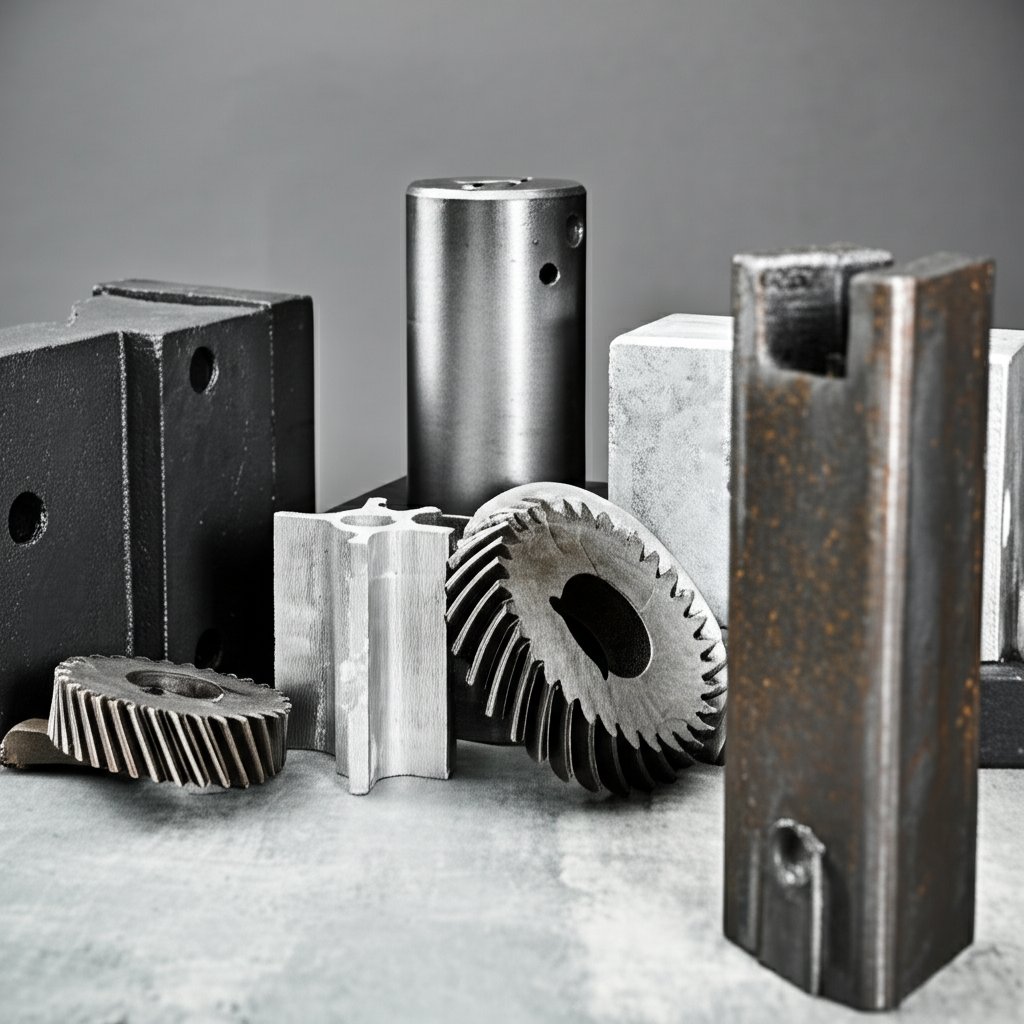
농장 장비 주물에 사용되는 일반적인 재료
농업 주물의 강도와 내구성을 평가할 때, 한 시즌 동안 지속되는 부분과 몇 년 동안 지속되는 부분의 차이를 만드는 재료가 궁금한 적이 있습니까? 그 대답은 신중한 금속과 합금의 선택에 있습니다. 독특한 특성을 위해 선택된 각 금속과 현대 농업의 엄격함에 얼마나 잘 어울립니다. 농업 주철 부품 및 기타 주요 구성 요소에 사용되는 주요 재료를 분류하여 각각의 성능과 비용에 어떤 영향을 미치는지 확인할 수 있습니다.
주요 재료와 농업 주물에서의 역할
올바른 자료를 선택하는 것은 사양 시트를 충족시키는 것이 아니라 부품의 기능을 환경의 요구와 일치시키는 것입니다. 다음은 농업 기계 부품 금속 캐스팅의 가장 일반적인 옵션을 자세히 살펴 봅니다.
연성 철 (결절 주철) : 인상적인 강도와 유연성으로 유명한 연성 철은 충격을 흡수하고 무거운 하중에서 부러지는 것을 저항 해야하는 부품의 최고 선택입니다. 전통적인 주철과 달리 독특한 미세 구조는 우수한 인성을 제공하여 차축 지지대, 괄호 및 일정한 진동 또는 충격에 노출 된 구성 요소에 이상적입니다. 비용 효율성은 또한 대형 스트레스가 많은 부품을 좋아합니다.
회색 철 : 이 고전적인 재료는 기어 박스, 하우징 및 브레이크 드럼과 같은 농업 주철 부품에 널리 사용됩니다. 회색 철은 탁월한 가공성, 진동 감쇠 및 내마모성으로 눈에 띄는데, 이는 소음을 줄이고 움직이는 부품의 수명을 연장하는 데 도움이되는 자격입니다. 또한 많은 대안보다 저렴한 가격으로 대량 이하이지거나 덜 중요한 구성 요소를위한 실용적인 선택입니다.
주철 (탄소 및 합금강) : 최대 강도와 충격 저항이 필요한 경우 농업 기계의 주철 강철이 작용합니다. 1020 및 8620과 같은 탄소강 등급은 인성 및 가공성의 균형을 제공하는 반면 4130 및 4140과 같은 합금강은 향상된 인장 강도 및 내구성을 추가합니다. 이 재료는 일반적으로 기어 캐스팅, 레버, 피벗 및 현장 장비에 사용됩니다.
알루미늄 합금 : 힘을 희생하지 않고 체중을 줄여야합니까? 알루미늄 합금은 부식성과 가벼운 중량이 우선 순위 인 특정 농업 기계 부품 강철 주조 응용 분야에 점점 더 많이 사용됩니다. 강철이나 철만큼 강하지는 않지만 알루미늄의 녹에 대한 저항력과 캐스팅의 용이성은 비 구조 성분의 매력적인 옵션이됩니다.
기타 특수 합금 : 경우에 따라 밸브 또는 피팅의 부식 저항 또는 고유 한 기계적 특성을 요구하는 부품에 대해 구체적인 요구에 따라 황동, 청동 또는 스테인레스 스틸이 사용됩니다. 이 자료는 더 높은 가격표를 가지고있을 수 있지만 계산 된 곳에 타겟팅 된 성능을 제공 할 수 있습니다.
재료 선택이 성능과 비용에 미치는 영향
트랙터 용 괄호를 선택한다고 상상해보십시오. 연성 철을 선택하면 균열없이 하중에서 구부릴 수있는 부품을 얻을 수 있습니다. 회색 철을 선택하면 진동 댐핑 및 저렴한 비용이 적지 만 유연성은 적습니다. 대단한 기어 또는 레버의 경우 주철 스틸은 비교할 수없는 강도를 제공하지만 더 높은 가격으로 올 수 있습니다. 한편 알루미늄은 무게 절약 및 부식 저항이 무차별 강도보다 중요한 덮개 나 하우징에 적합합니다.
요컨대, 올바른 재료는 농업 주물이 내구성, 신뢰성 및 운영 요구를 가치를 제공하도록합니다. 다음 섹션에서 볼 수 있듯이, 투자 또는 모래 주조에 관계없이 제조 공정은 이러한 재료가 현장에서 어떻게 수행되는지 향상시킵니다.
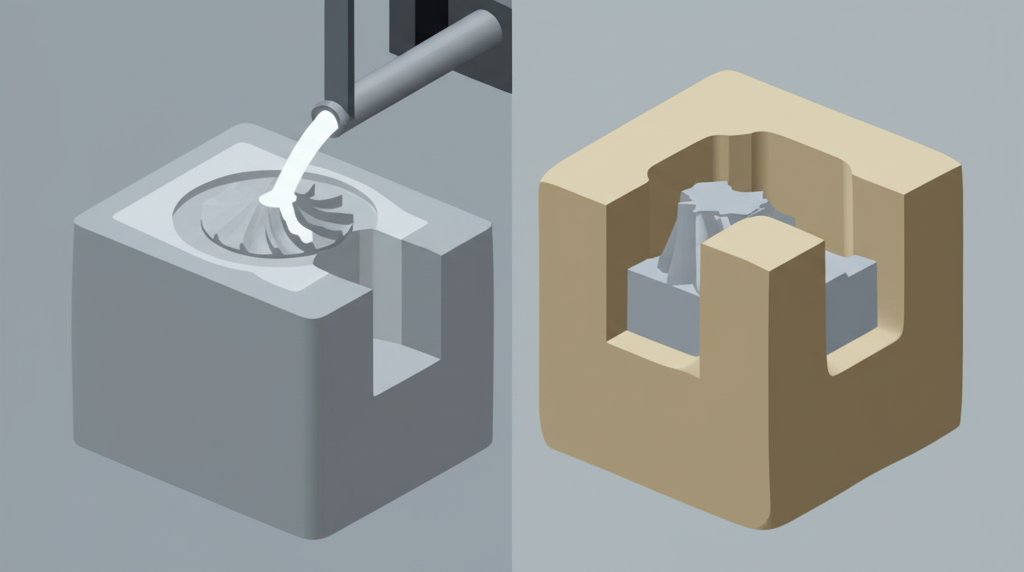
농업의 투자 캐스트 대 모래 캐스팅
농장 기계를위한 부품을 소싱 할 때 왜 일부 구성 요소가 매끄럽고 세밀하게 상세하고 다른 구성 요소가 견고하고 견고한 지 궁금한 적이 있습니까? 대답은 종종 각 부분 뒤의 캐스팅 과정으로 이어집니다. 농업 주물을 생산하는 데 가장 널리 사용되는 두 가지 방법은 투자 주조 및 모래 주조입니다. 그러나 특히 정밀, 내구성 및 비용이 모두 라인에있을 때 어떤 것이 귀하의 요구에 적합한 지 어떻게 결정합니까?
두 가지 주요 캐스팅 프로세스를 이해합니다
투자 캐스팅- 때때로 "잃어버린 왁스"방법이라고 불리는 경우 - 왁스 모델을 형성하고 세라믹 쉘에 넣어 매우 상세하고 정확한 부품을 만듭니다. 왁스가 녹이면 녹은 금속이 껍질을 채우고 표면 마감 처리가 우수하고 단단한 공차로 구성 요소를 생성합니다. 반면에, 모래 주조 압축 된 모래 곰팡이를 사용하여 부품을 형성하여 비용 효율성이 핵심 인 더 크고 간단한 모양과 프로젝트를위한 것입니다.
나란히 비교 : 투자 주조 대 모래 주조
| 특징 | 투자 캐스팅 | 모래 주조 |
|---|---|---|
| 공차 및 정밀도 | 높음 (CT 4-6); 상세하고 얇은 벽 부품에 탁월합니다 | 보통 (CT 10-13); 덜 복잡하고 두꺼운 부품에 가장 적합합니다 |
| 표면 마감 | 부드럽고 최소한의 마무리가 필요합니다 | 더 거칠고 추가 가공 또는 연삭이 필요할 수 있습니다 |
| 설계 복잡성 | 복잡한 모양, 내부 공동 및 세부 사항을 처리합니다 | 곰팡이 설계에 의해 제한; 기본 형상에 가장 적합합니다 |
| 툴링/곰팡이 비용 | 상세한 금형 및 패턴으로 인해 더 높은 선불 | 저렴한 비용; 모래 곰팡이는 쉽고 생산하기 쉽고 저렴합니다 |
| 단위당 비용 (규모) | 중간 ~ 높은 볼륨의 비용 효율적; 작은 달리기의 경우 더 높습니다 | 저가에서 높은 볼륨, 특히 대규모 부품의 경우 매우 비용 효율적입니다. |
| 생산량 | 중간에서 대형 생산에 이상적입니다 | 유연성 - 작고 큰 배치 모두에 적합합니다 |
| 전형적인 농업 응용 | 정밀 기어, 브래킷, 레버, 주택 및 농업 기계 부품 투자 부품 부품 | 차축 지원, 하우징, 브레이크 드럼, 대형 괄호 및 기본 구조 구성 요소 |
| 재료 옵션 | 강철, 철, 스테인리스 및 특수 합금을 포함한 넓은 범위 | 아이언, 스틸, 알루미늄 등이 매우 넓습니다 |
| 리드 타임 | 더 긴 (곰팡이 준비 및 프로세스 단계로 인해) | 짧은 (모래 금형은 빨리 만들고 재활용됩니다) |
결정 방법 : 프로세스를 필요에 따라 일치시킵니다
투자 캐스팅을 선택하십시오 정밀, 부드러운 표면 또는 복잡한 모양이 필요할 때 (작은 기어, 복잡한 레버 또는 정확도가 가장 중요한 맞춤형 브래킷을 생각하십시오. 이 과정은 특히 가치가 있습니다 농업 투자 주물 그것은 단단한 공차를 충족 시키거나 벽이 얇아 야합니다.
모래 주조를 선택하십시오 비용과 속도가 우선 순위 인 하우징, 액슬 지지대 또는 브레이크 드럼과 같은 크고 간단한 부품을 생산할 때. 모래 주조는 또한 낮은 생산량 및 높은 생산량 모두에 유연하여 많은 농업 파운드리의 필수 요소입니다.
새로운 파종기 프레임을 설계한다고 상상해보십시오. 최소한의 가공이있는 세부적인 기능이나 넷 모양이 필요한 경우 투자 캐스팅이 가장 적합 할 수 있습니다. 그러나 강력한 하우징이나 대형 괄호를 규모로 한 경우 모래 주조는 최고의 가치를 제공 할 수 있습니다.
두 과정 모두 현대 농업에서 자리를 차지하고 있으며 올바른 선택은 종종 귀하의 기능, 필요한 관용 및 생산 목표에 달려 있습니다. 앞으로 나아가면서 이러한 차이를 이해하면 장비의 요구에 맞는 프로세스와 수익성을 선택하는 데 도움이됩니다. 다음 섹션에서는이 주물이 어떻게 광범위한 현대 농업 기계에 통합되는지 살펴보고 다양한 장비 유형에 걸쳐 필수적인 역할을 강조합니다.
현대 농업 기계의 주요 캐스팅 응용
트랙터를 보거나 결합 하여이 기계가 시즌 후 시즌을 다루기에 충분히 힘든 이유를 궁금해 한 적이 있습니까? 대답은 종종 평범한 시야에 숨겨져 있습니다 : 캐스트 메탈 구성 요소. 농업 주물은 수많은 기계의 백본으로, 가장 중요한 힘, 정밀도 및 수명을 조용히 전달합니다. 그러나 이러한 캐스트 부품은 정확히 어디에 사용되었으며, 오늘날의 다양한 농장 장비에서 왜 그렇게 필수적이지 않습니까?
캐스팅은 어디에서 현대 농업을 강화합니까?
농업 기계의 주요 유형을 분해하고 어떻게 농업 기계 주조 부품 각각에 통합되어 있습니다. 캐스팅은 엔진에서 도구에 이르기까지 하나의 지역에만 국한되지 않습니다. 다음은 다양성을 자세히 살펴 봅니다 농업 장비 주물 주요 기계 범주에서 :
트랙터
엔진 블록 및 실린더 : 신뢰할 수있는 작동에 필요한 핵심 강도와 내열을 제공하십시오.
기어 박스 및 변속기 하우징 : 먼지, 잔해 및 충격으로부터 기어 및 내부 메커니즘을 보호하십시오.
액슬이지지 및 프레임 : 거친 지형에서 무거운 짐을지고 구조적 무결성을 유지하십시오.
유압 펌프 본체 및 밸브 하우징 : 구현의 부드러운 리프팅 및 제어를 보장하십시오.
장착 브래킷 및 링키지 암 : 구현 또는 첨부 파일을 연결하고 안전합니다.
수확 장비 (조합, 사료 수확기 등)
가이드 레일 및 운전 휠 : 기계 내에서 모션을 직접 전송합니다.
롤러 및 쉘 : 작물을 분리하고 처리하는 움직이는 부분을 형성하십시오.
드럼 하우징 및 끝 덮개 타작 : 내부 메커니즘을 보호하고 정렬을 유지하십시오.
곡물 탱크 및 엘리베이터 구성 요소 : 수확 된 곡물을 효율적으로지지하고 움직입니다.
경작 장비 (쟁기, 경운기, 해로우)
쟁기 및 경운기 지점 : 가혹한 조건에서 토양에 침투하고 마모에 저항하십시오.
로토 틸러 타인 : 토양을 분해하고 시드 베드를 준비하십시오.
하드웨어 및 장착 브래킷 : 도구와 구현을 프레임에 안전하게 첨부하십시오.
라이너와 블레이드 홀더 착용 : 암석과 잔해물에 노출 된 경작 도구의 수명을 연장하십시오.
파종 및 심기 장비
시드 드릴 프레임 및 행 장치 : 정확한 종자 배치 및 깊이 제어를 지원합니다.
파종기 호퍼 및 커버 : 오염으로부터 씨앗과 메커니즘을 보호하십시오.
디스크 오프너 및 베어링 하우징 : 토양을 자르고 작동 중에 정렬을 유지하십시오.
장착 팔과 괄호 : 툴바에 유연한 조정 및 안전한 첨부 파일을 활성화하십시오.
이 응용 분야에서 캐스팅이 필수적인 이유는 무엇입니까?
돌이 많은 땅을 가로 지르는 쟁기 샤워 또는 매일 전원을 전송 해야하는 기어 박스가 마모 된 마모를 상상해보십시오. 캐스팅 농업 기계 제조업체는 각 부품의 재료와 디자인을 특정 기능으로 조정하여 강도, 내마모성 및 정확한 착용감을 결합 할 수 있습니다. 결과? 더 오래 지속되고 더 잘 수행되며 유지 보수 비용을 확인하는 장비.
내구성에 관한 것이 아니라농업 캐스팅 장비 또한 다른 제조 방법에서는 불가능하거나 엄청나게 비쌀 수있는 복잡한 모양과 내부 기능을 가능하게합니다. 이는 더 부드러운 운영, 다른 부품과의 통합 및 전체적으로보다 효율적인 농업을 의미합니다.
보시다시피, 주물은 토양 준비에서 수확에 이르기까지 농업 과정의 모든 단계에 필수적입니다. 다음 섹션에서는 경작 및 성능이 절대적으로 중요한 경작 및 시드 장비의 지상 참여 도구와 같이 이러한 캐스트 부품이 가장 까다로운 역할을 위해 특별히 설계되는 방법을 살펴볼 것입니다.
경작 및 파종 장비를위한 필수 캐스트 구성 요소
바위가 많은 토양이나 새벽이 황혼으로 일하는 씨더를 통해 쟁기를 깎을 때, 시즌 후 시즌을 수행하는이지면에 참여하는 도구를 유지하는 것은 무엇입니까? 대답은 전문화 된 것입니다 농업 기계 부품 캐스팅 그것은 경작 및 파종 장비의 중추를 형성합니다. 이러한 캐스트 부품이 왜 그렇게 중요하고, 스트레스를 견뎌냅니다. 어떤 구성 요소가 신뢰할 수있는 필드 성능에 가장 중요한 구성 요소를 세분화합시다.
그라운드 엔딩 부품에 캐스팅이 중요한 이유
복잡한 소리? 그것은. 경작 및 파종 부품은 농업에서 가장 가혹한 조건에 직면 해 있습니다. 현장을 통과하는 모든 통과는 토양, 모래 및 암석에서 반복적 인 마모와 숨겨진 잔해물의 갑작스런 영향을 의미합니다. 이러한 스트레스는 더 적은 구성 요소를 빠르게 마모하여 비용이 많이 드는 가동 중지 시간과 자주 교체를 초래할 수 있습니다. 그렇기 때문에 신중하게 선택된 철 또는 강철 합금 및 고급 열처리가있는 캐스팅이 고기 복용량을위한 해결책입니다. 캐스팅은 다음을 허용합니다.
맞춤형 모양 및 강화 : 가장 필요한 곳에 강도를 극대화하는 복잡한 형상.
재료 최적화 : 최대 마모 및 충격 저항을 위해 높은 하강 합금 및 맞춤형 열처리 사용.
일관된 품질 : 신뢰할 수있는 성능을 제공하는 반복 가능한 제조 공정, 배치 후 배치.
심기 시즌 중반에 쟁기 지점을 교환한다고 상상해보십시오. 지연은 생산성을 잃는 것을 의미합니다. 극심한 내구성을 위해 설계된 캐스트 부품을 사용하면 이러한 위험을 최소화하고 일정에 따라 운영을 유지합니다.
경작 및 파종의 임계 캐스트 구성 요소
열쇠를 봅시다 농업 캐스팅 부분 그것은 현장 성능에 차이를 만듭니다. 각각은 특정 스트레스를 견딜 수 있도록 설계되었으며 가장 힘든 토양에서도 서비스 수명을 연장하도록 설계되었습니다.
쟁기 점과 삽 : 이것들은 토양과의 첫 번째 접촉 라인, 지구를 자르고 돌리게합니다. 고강도 강철 또는 연성 철에서 주조되며, 일정한 마모와 가끔 암석의 영향에 저항해야합니다. 많은 수명을 위해 강화 된 가장자리 또는 오버레이가 특징입니다.
청소 및 경운기 지점 : 토양 폭기 및 잡초 제어를 위해 설계된이 부분에는 선명도와 인성이 모두 필요합니다. 캐스트 스윕은 종종 강화 된 갈비뼈가 있으며 최적의 경도를 위해 열처리됩니다.
디스크 블레이드 및 허브 : 잔류 물과 혼합 토양을 얇게 썰기 위해 사용되는 디스크 블레이드는 엄청난 연마성 마모에 종속됩니다. 캐스트 허브는 충격 하중을 처리하고 정렬을 유지하는 데 필요한 구조적지지를 제공합니다.
파종기 행 장치 프레임 : 이 프레임은 종자 계량 및 배치 메커니즘을 지원합니다. 캐스트 구성은 변형없이 진동, 비틀기 및 반복적 인 영향을 처리 할 수 있도록합니다.
종자 회사 및 프레스 휠 : 직접 마모에 덜 노출되지만, 이러한 구성 요소는 여전히 적절한 종자-토양 접촉 및 일관된 심 깊이를 보장하기 위해 강도와 치수 정확도가 필요합니다.
캐스트 파트 라스는 무엇입니까?
기본 재료에 관한 것이 아닙니다. 최고 농업 기계 부품 캐스팅 결합하다:
재료 선택 : 충격 흡수를위한 연성 철, 마모를위한 고 탄소강 또는 특성의 균형을위한 합금 주물.
열처리 : 경도와 강인함을 높이기 위해 담금질 및 템퍼링과 같은 과정.
정밀 제조 : 완벽한 착용감과 기능을위한 캐스팅 및 가공 공차의 엄격한 제어.
품질 파운드리는 또한 표면 처리 또는 오버레이를 적용하여 특히 선행 가장자리 및 고치문 영역에서 마모 수명을 더욱 확장 할 수 있습니다.
요약하면, 경작 및 파종 장비에 사용되는 캐스트 구성 요소는 더 적은 부품이 실패 할 때 번성하도록 설계됩니다. 그들의 설계, 재료 및 제조 공정은 모두 가동 시간을 극대화하고 유지 보수를 최소화하기 위해 선택되어있어 필드를 생산적으로 유지하고 장비를 강하게 유지합니다. 다음으로, 우리는이 주물이 디자인에서 완제품으로 가져가는 단계별 여행을 자세히 살펴볼 것이므로 모든 신뢰할 수있는 부분의 전문 지식과 품질 관리에 더 잘 감사 할 수 있습니다.
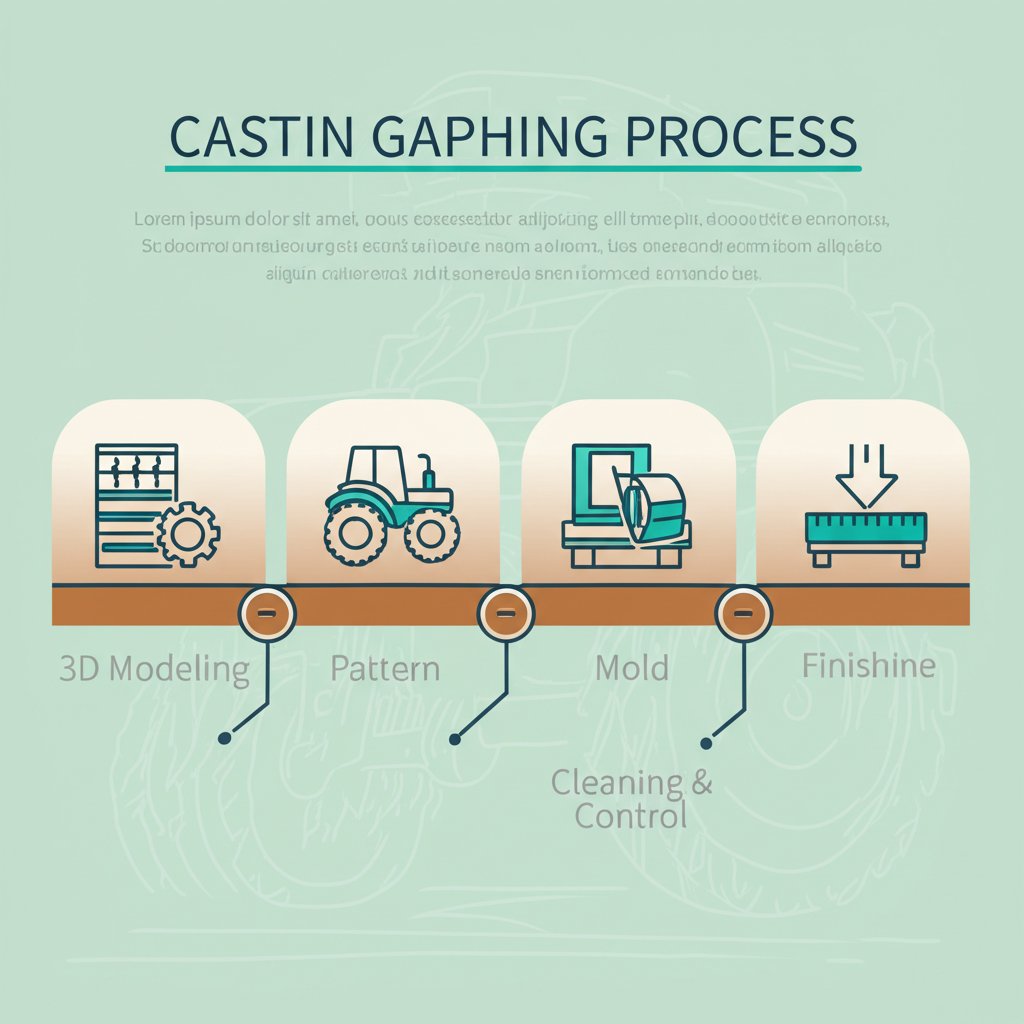
농업 캐스트 부분의 제조 여정 : 설계에서 내구성있는 성능으로
견고한 기어 박스 하우징이나 정밀 화자 브래킷이 디자인 스케치에서 완성 된 필드 준비 구성 요소로 어떻게 진행되는지 궁금한 적이 있습니까? 아이디어에서 신뢰할 수있는 농업 캐스팅 제품까지의 경로는 나타나는 것보다 더 복잡합니다. 패턴 설계에서 최종 검사에 이르기까지 각 단계는 품질을 극대화하고 모든 부분이 현대 농업의 요구에 부응 할 수 있도록 설계됩니다. 이 여정을 살펴 보겠습니다. 모든 캐스트 부분에 들어가는 세부 사항에 대한 전문 지식과 관심을 높이 평가할 수 있습니다.
1 단계 : 설계 검토 및 패턴/툴링 생성
모두 부품의 요구 사항에 대한 자세한 검토, 즉 차분, 재료, 작동 응력 및 기타 기계와 맞습니다. 숙련 된 엔지니어는 고객과 협력하여 캐스팅 디자인을 최적화합니다. 여기에는 초안 각도, 벽 두께 및 재료 흐름을 고려하는 것이 포함됩니다. 일단 완성되면 패턴 (부품 모델)이 생성됩니다. 모래 주조의 경우 패턴은 목재, 플라스틱 또는 금속으로 만들어 질 수 있으며 투자 주조는 왁스 또는 플라스틱 패턴을 사용합니다.
중요한 이유 : 정확한 패턴은 모든 캐스팅에서 치수 정밀도 및 반복성의 기초를 설정합니다.
2 단계 : 금형 제작
다음으로, 패턴은 용융 금속을 형성 할 캐비티 인 금형을 만드는 데 사용됩니다. 모래 주조에서, 바인더와 혼합 된 모래는 패턴 주위에 포장되어 곰팡이를 형성한다. 투자 주조를 위해 왁스 패턴은 세라믹 슬러리로 코팅 된 다음 쉘을 형성하기 위해 경화됩니다. 내부 공동 또는 복잡한 기능을 만들기 위해 코어가 추가 될 수 있습니다.
중요한 이유 : 곰팡이 품질은 표면 마감, 치수 정확도 및 복잡한 형상을 주조하는 능력에 직접적인 영향을 미칩니다.
3 단계 : 금속 용융 및 붓기
곰팡이가 준비된 상태에서는 연성 철, 강철 또는 알루미늄 합금이든 선택한 금속을 녹일 차례입니다. 퍼니스 유형 및 용융 공정은 금속 및 원하는 특성에 따라 선택됩니다. 일단 용융되면 금속이 금형 공동에 부어집니다. 완전한 충전을 보장하고 결함을 최소화하기 위해 온도와 속도를 위해 붓기를 제어해야합니다.
중요한 이유 : 정확한 용융 및 쏟아지는 것은 올바른 미세 구조를 달성하고 내부 결함을 피하는 데 중요합니다.
4 단계 : 쉐이크 아웃 및 청소
냉각 및 응고 후, 곰팡이가 분해되거나 (모래 주조) 또는 세라믹 쉘이 제거되어 (투자 주조) 거친 캐스팅이 나타납니다. 과도한 모래, 세라믹 및 게이팅 시스템은 진동, 폭파 또는 세척을 통해 청소됩니다. 이것을 쉐이크 아웃 프로세스라고합니다.
중요한 이유 : 적절한 청소는 외래 재료가 남아 있지 않아 부품의 기능이나 장수를 손상시킬 수 있습니다.
5 단계 : 열처리
적용에 따라 주조는 기계적 특성을 개선하기 위해 어닐링, 정규화 또는 담금질 및 템퍼링과 같은 열처리를 겪을 수 있습니다. 이 단계는 의도 된 용도로 부품을 조정하여 경도, 강인성 및 내마모성을 향상시킵니다.
중요한 이유 : 열처리는 강도 및 내구성을 최적화하는 데 필수적입니다. 특히 스트레스가 많은 농업 캐스팅 제품.
6 단계 : 마무리 및 가공
캐스팅에 원하는 특성이 있으면 마무리 할 시간입니다. 여기에는 정확한 치수 및 표면 마감 요구 사항을 충족하기위한 연삭, 가공, 시추 또는 표면 처리가 포함될 수 있습니다. 일부 부품은 최소한의 마무리 후에 준비되며, 다른 부품은 타이트한 공차와 추가 처리가 필요합니다.
중요한 이유 : 마무리는 각 부품이 어셈블리에 완벽하게 맞고 현장에서 원활하게 작동하도록합니다.
7 단계 : 품질 검사 및 테스트
최종적, 아마도 가장 중요한 것은 품질 관리입니다. 각 캐스팅은 치수 정확도, 표면 마감 및 내부 음성을 검사합니다. 기술에는 육안 검사, 좌표 측정 기계 (CMM), 초음파 또는 X- 선 테스트, 경도 또는 인장 테스트가 포함될 수 있습니다. 엄격한 표준을 충족하는 부품 만 포장 및 배송으로 이동합니다.
중요한 이유 : 엄격한 검사는 결함을 조기에 포착하여 신뢰할 수 있고 고성능 농업 캐스팅 제품 만 고객에게 도달 할 수 있도록합니다.
모든 단계가 중요합니다
계단을 건너 뛰거나 모서리를 자르는 것을 상상해보십시오. 곰팡이가 정확하게 만들어지지 않았거나 캐스팅이 제대로 열처리되지 않았다면 어떻게 될까요? 결과는 조기 마모, 예상치 못한 실패 또는 심기 또는 수확 중에 비용이 많이 드는 가동 중지 시간 일 수 있습니다. 그렇기 때문에 평판이 좋은 파운드리는 모든 생산 단계에서 숙련 된 팀, 고급 장비 및 강력한 품질 시스템에 투자합니다.
요약하면, 디자인에서 완성 된 농업 캐스팅으로의 여정은 공학, 장인 정신 및 품질 관리의 신중한 조화입니다. 각 부분은 금속과 곰팡이뿐만 아니라 그 뒤에있는 팀의 전문 지식과 헌신에 의해 형성됩니다. 다음 공급 업체를 고려할 때이 프로세스를 이해하면 입증 된 제조 우수성의 가치를 높이 평가하는 데 도움이됩니다. 다음으로 캐스팅 공급 업체를 선택할 때 무엇을 찾아야하는지 살펴 보겠습니다. 따라서 소스가 지속적으로 구축됩니다.
올바른 농업 캐스팅 제조업체 선택
농업 장비의 중요한 부품을 소싱 할 때 공급 업체를 선택하면 운영의 신뢰성과 수익성을 만들 수 있습니다. 복잡한 소리? 특히 많은 사람들과 함께 할 수 있습니다 농업 캐스팅 부품 공급 업체 유망한 품질과 성능. 그렇다면 진정으로 신뢰할 수있는 것을 어떻게 나머지와 분리합니까? 파트너 관계를 맺기 전에 고려해야 할 필수 요소를 분류합시다. 농업 캐스팅 제조업체.
공급 업체에서 무엇을 찾아야합니까?
기어 박스 하우징이나 경작 블레이드에 대한 큰 순서를 상상해보십시오. 부품이 사양을 충족하지 않거나 몇 주 늦게 도착하지 않도록하는 것을 상상해보십시오. 비용이 많이 드는 중단을 피하기 위해 신뢰할 수있는 파트너를 식별하는 데 도움이되는 실용적인 기준 점검표가 있습니다.
산업 경험 : 공급 업체는 농업 캐스팅에서 입증 된 실적을 가지고 있습니까? 수년간의 경험은 종종 깊은 프로세스 지식과 농기계의 고유 한 요구에 대한 이해를 더 잘 해석합니다. 농업 분야의 다양한 고객 기반을 가진 공급 업체는 특정 요구를 예상하고 해결할 가능성이 높습니다.
재료 전문 지식 : 파운드리가 연성 철, 주철 및 알루미늄 합금과 같은 광범위한 재료를 적용에 적용 할 수 있습니까? 최고의 공급 업체는 각 부품에 대한 최적의 자료, 밸런싱 비용, 내구성 및 성능을 선택하는 데 도움이됩니다. 요구 사항에 맞는 이전 프로젝트의 예를 요청하십시오.
프로세스 기능 : 캐스팅 프로세스 기능 : 제조업체는 여러 캐스팅 방법 (모래, 투자, 잃어버린 기포, 다이 캐스팅 등)을 지원합니까? 이 유연성은 대량 실행이 필요한지 또는 복잡한 형상이 필요한지 여부에 관계없이 구성 요소가 가장 효율적이고 비용 효율적인 프로세스와 일치 할 수 있음을 의미합니다.
품질 관리 시스템 : ISO 9001 또는 이와 유사한 인증과 같은 강력한 품질 보증의 증거를 찾으십시오. 신뢰할 수있는 공급 업체는 모든 생산 단계에서 엄격한 프로세스 제어, 정기 검사 및 문서화 된 테스트를 유지하여 모든 배치가 사양을 충족시킬 수 있도록합니다.
사내 열처리 및 가공 : 파운드리는 통합 열처리 및 가공을 제공합니까? 이를 통해 공급망을 간소화하고 필요한 기계적 특성과 치수 정확도로 캐스팅이 조립 준비가되도록 할 수 있습니다.
기술 지원 및 엔지니어링 협업 : 공급 업체가 설계 최적화, 프로토 타이핑 및 문제 해결을 지원할 수 있습니까? 숙련 된 엔지니어에 대한 액세스는 부품 형상을 개선하고 올바른 합금을 선택하고 생산에 영향을 미치기 전에 문제를 해결하는 데 도움이됩니다.
생산 능력 및 확장 성 : 제조업체가 현재 주문 크기를 처리 할 수 있도록 장비를 갖추고 있으며 요구가 커지면 확장합니까? 유연한 용량은 계절 수요 스파이크를 충족 시키거나 제품 라인을 확장하는 데 중요합니다.
테스트 및 검사 시설 : 공급 업체에는 비파괴 테스트, 치수 점검 및 재료 분석을위한 고급 실험실 및 장비가 있습니까? 현장 테스트는 결함이 일찍 잡히고 평판을 보호하고 위험을 줄일 수 있도록합니다.
고객 참조 및 평판 : 유사한 프로젝트 나 산업의 참고 문헌을 요청하십시오. 평판이 좋은 공급 업체는 신뢰성과 서비스 품질을 보여주는 평가 및 사례 연구를 기꺼이 공유 할 것입니다.
투명한 의사 소통 및 물류 : 공급 업체는 얼마나 반응이 있습니까? 명확한 타임 라인, 사전 업데이트 및 신뢰할 수있는 배송 계약을 통해 놀라움을 피하고 운영을 원활하게 운영하는 데 도움이됩니다.
이러한 요소가 중요한 이유
공급 업체를 선택하는 것은 가격이나 근접성에 관한 것이 아니라 일관된 품질, 정시 제공 및 가장 필요할 때 기술 지원을 제공하는 파트너십을 구축하는 것입니다. 예를 들어, 사내 열처리 및 고급 테스트 시설이있는 공급 업체는 조립 라인에 도달하기 전에 문제를 해결하고 수정하여 시간과 비용을 절약 할 수 있습니다. 마찬가지로, 심층 전문 지식을 가진 회사는 장비 수명을 연장하는 합금 또는 캐스팅 프로세스를 추천하여 장기 유지 보수 비용을 줄일 수 있습니다.
최고의 공급 업체를 차별화하는 것은 무엇입니까?
최고 농업 캐스팅 부품 공급 업체 지속적인 개선에 투자하고 최신 제조 기술을 채택하며 고객과의 긴밀한 커뮤니케이션을 유지하십시오. 그들은 가동 중지 시간을 최소화하기 위해 유연한 생산 일정과 빠른 처리 시간을 제공하는 창문 심기 및 수확의 압력을 이해합니다. 강력한 파트너십은 투명성, 기술 노하우 및 운영 성공에 대한 공유 헌신에 기반을두고 있습니다.
옵션을 평가할 때 : 올바른 공급 업체는 단순한 공급 업체가 아니라 신뢰할 수있는 고성능 농장 장비를위한 전략적 동맹국입니다. 다음 섹션에서는 농업 캐스팅이 시간의 시험을 견뎌내고 지속적인 가치를 제공하기 위해 고집해야 할 특정 품질 요소에 대해 더 깊이 뛰어들 것입니다.
오래 지속되는 농업 주물을위한 품질 요소
새로운 농장 기계에 투자 할 때 모든 구성 요소가 거리를 갈 것으로 기대합니다. 그러나 실제로 만드는 것 고품질 농업 주물 수년간의 노력을 서서? 복잡한 소리? 특히 힘든 환경을 고려할 때이 부분이 직면 할 수 있습니다. 신뢰할 수있는 주물을 비싼 고장과 다운 타임을 유발하는 주물과 분리하는 필수 품질 요소를 분류합시다.
고품질 농업 캐스팅에서 무엇을 찾아야합니까?
시즌 중반 또는 몇 번의 패스 후에 마모되는 경작 지점을 깨뜨리는 기어 박스 하우징을 상상해보십시오. 이러한 실패는 종종 간과 된 품질 속성으로 거슬러 올라갑니다. 캐스팅이 오래 지속되는 성능을 제공하기 위해 정통한 구매자와 엔지니어가 집중하는 것은 다음과 같습니다.
물질적 무결성 : 품질 캐스팅의 기초는 엄격한 테스트를 통해 확인 된 올바른 재료입니다. 이것은 적절한 화학 성분 및 순도와 함께 합금을 사용하여 주조가 마모, 부식 및 충격에 저항 할 수 있도록하는 것을 의미합니다. 신뢰할 수있는 공급 업체는 화학 분석 및 기계 테스트를 수행하여 모든 배치가 사양을 충족하는지 확인합니다.
치수 정확도: 정밀 문제 - 사양이 약간 벗어난 부분은 오정렬, 조기 마모 또는 어셈블리 두통을 유발할 수 있습니다. 좌표 측정 기계 (CMM) 또는 기타 고급 검사 도구로 검증 된 타이트한 공차로 생성 된 주물을 찾으십시오. 이를 통해 현장에서 완벽하고 부드러운 작동을 보장합니다.
표면 마감 : 부드럽고 결함이없는 표면은 외관에 관한 것이 아닙니다. 마찰을 줄이고 스트레스 농도를 최소화하며 균열이나 부식을 예방하는 데 도움이됩니다. 고품질 농업 주물에는 신중한 곰팡이 제작 및 마무리 공정 덕분에 구덩이, 거칠기 또는 잔류 모래와 같은 표면 결함이 없습니다.
기계적 특성 (경도, 강도, 강인함) : 부품의 기능에 따라, 경도의 균형 (마모 저항), 강도 (무거운 하중을 다루기 위해) 및 인성 (균열없이 충격을 흡수하기 위해)이있는 주물을 원할 것입니다. 열처리는 종종 이러한 특성을 미세 조정하는 데 사용되며 부품이 실제 스트레스 하에서 안정적으로 수행 할 수 있도록합니다.
일관성과 반복성 : 한 번의 배치 부품이 잘 수행 된 적이 있다면 다음 배치가 일찍 실패합니까? 일관성이 핵심입니다. Top Foundries는 ISO 9001 인증과 같은 강력한 품질 관리 시스템을 사용하고 생산 전반에 걸쳐 중요한 제어 포인트를 설정하여 모든 캐스팅이 매번 동일한 높은 표준을 충족하도록 보장합니다.
이러한 요소는 다운 타임과 비용을 어떻게 줄입니까?
단일 캐스팅 실패의 파급 효과 : 수리 비용, 계획되지 않은 가동 중지 시간, 생산성 손실 및 잠재적 작물 손실에 대해 생각해보십시오. 위와 같은 품질 속성을 주장함으로써 이러한 위험을 직접적으로 줄입니다. 고지성 재료와 정확한 치수는 부품에 맞는 부분과 기능을 의미합니다. 우수한 표면 마감과 기계적 특성은 더 긴 마모 수명과 교체가 적습니다. 일관된 품질을 사용하면 첫 번째 선적뿐만 아니라 모든 배송이 모든 선적을 신뢰할 수 있습니다.
"품질 관리는 검사를 통과하는 것뿐만 아니라 시즌 이후의 시즌 인 필드에서 안정적인 성능을 제공하는 것입니다."
품질 보장을위한 모범 사례
구매 주문에서 자료 및 기계적 자산 요구 사항을 지정하십시오.
각 배치와 함께 자재 인증 및 검사 보고서를 요청하십시오.
X- 선, 초음파 또는 CMM 검사와 같은 고급 테스트를 구현하는 공급 업체와 협력하여 조기 결함을 포착합니다.
인정 된 품질 관리 시스템을 따르는 파운드리와 제휴하고 프로세스 개선에 지속적으로 투자하십시오.
이러한 품질 요소의 우선 순위를 정할 때 부품을 구매하는 것이 아니라 더 적은 수의 고장, 유지 보수 비용 및 마음의 평화에 투자하고 있습니다. 우리가 마무리 할 때, 이러한 원칙이 공급 업체 선택과 농업 장비의 장기 신뢰성에 어떻게 연결되는지 알 수 있습니다.
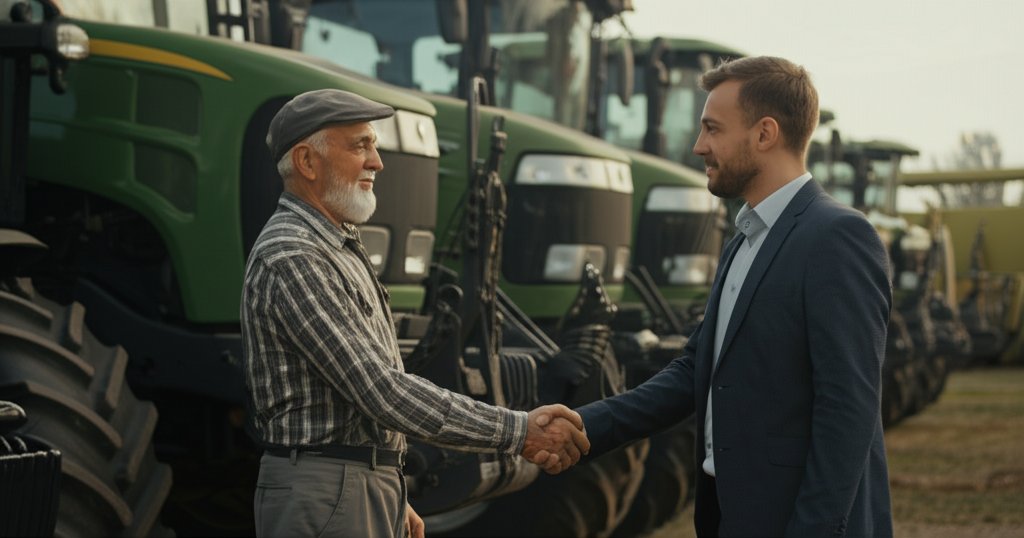
결론
신뢰할 수있는 농업 캐스팅 공급 업체 - 현대 농업 성공의 기초
생 금속에서 현장에서 입증 된 기계로의 여정을 되돌아 보면 농업 주물이 단순한 구성 요소 이상이라는 것이 분명합니다. 고급 캐스팅 프로세스를 통해 생성 된 모든 기어 박스 하우징, 경작 블레이드 및 액슬 지지대는 계절 후 시즌 후 트랙터, 수확기 및 강하게 달리는 데 도움이됩니다.
그러나 주요 질문은 다음과 같습니다. 장비가 해마다 해당 신뢰성을 제공하는 방법은 무엇입니까? 답은 재료 선택 또는 제조 공정을 넘어서는 것입니다. 그것은 a와의 파트너십으로 이어집니다 신뢰할 수있는 농업 캐스팅 공급 업체 누가 농업 부문의 독특한 도전을 이해하고 일관된 고품질 결과를 제공 할 수있는 전문 지식을 보유하고 있습니다.
최고의 공급 업체를 차별화하는 것은 무엇입니까?
포괄적 인 솔루션 : 최고의 공급 업체는 전체 스펙트럼의 캐스팅 프로세스 (및 투자, 잃어버린, 다이 등)를 제공하므로 모든 구성 요소는 이상적인 방법과 재료와 일치합니다. 이 유연성을 통해 각 응용 프로그램에 대한 내구성, 무게 및 비용의 올바른 균형을 얻을 수 있습니다.
자료 및 프로세스 전문 지식 : 최고 제조업체는 연성 철, 주철, 알루미늄 합금 및 특수 재료 중에서 선택하여 실제 환경을 위해 각 캐스팅을 최적화합니다. 그들의 경험은 더 적은 놀라움과 오래 지속되는 부분을 의미합니다.
고급 기술 및 엄격한 품질 관리 : 신뢰할 수있는 파트너는 최첨단 생산 라인, 비파괴 테스트 및 사내 가공에 투자합니다. 세부 사항에 대한 이러한 관심은 모든 배치를 의미합니다 OEM을위한 농업 주물 적합, 마감 및 기계적 특성에 대한 정확한 표준을 충족합니다.
사용자 정의 및 빠른 처리 : 디자인, 합금 및 배달 일정을 조정하는 기능을 통해 다운 타임을 최소화하고 재고를 제어하며 변화하는 필드 요구에 신속하게 대응할 수 있습니다.
업계 인정 및 지원 : 선도적 인 공급 업체는 품질과 서비스로 인정 받고 기술 지원, 강력한 물류 및 일회성 판매뿐만 아니라 장기 파트너십에 대한 약속을 제공합니다.
Tiegu가 캐스팅 파트너로 두드러지는 이유
한 지붕 아래에 이러한 모든 장점이 있다고 상상해보십시오. 당신의 것입니다 오늘날의 농업 장비 제조업체와 대규모 재배자가 캐스팅 공급 업체로부터 요구하는 것을 보여줍니다. Tiegu는 광범위한 캐스팅 기술, 심층 재료 과학 전문 지식 및 입증 된 실적을 통해 다음을 제공합니다.
연마 토양, 수분 및 무거운 짐을 위해 설계된 내구성이 뛰어난 고성능 주물
형상, 합금 및 생산량과 일치하는 맞춤형 솔루션
일정 및 예산에 따라 프로젝트를 유지하기 위해 빠른 처리 및 관리 가능한 툴링 비용
비파괴 테스트 및 정밀 가공을 포함한 포괄적 인 사내 품질 관리
신뢰성과 혁신에 대한 글로벌 지원 및 산업 인식
Tiegu와 같은 파트너를 선택하면 부품을 구매하는 것이 아니라 가동 시간, 유지 보수 비용 절감 및 장기적인 장기 명성에 투자하고 있습니다.
조치를 취하십시오 : 품질과 파트너십을 우선시하십시오
다음 프로젝트 또는 조달주기를 앞으로 나아갈 때 : 진정한 가치 농업 주물 품질, 커스터마이즈 및 서비스에 대한 최고 기준을 충족하는 공급 업체가 공급받을 때만 실현됩니다. 가장 낮은 입찰자 또는 한 가지 크기의 접근 방식에 정착하지 마십시오. 대신, 파트너로서 당신과 함께 일할 공급 업체를 찾으십시오. 목표를 이해하고, 도전을 예상하며, 비즈니스를 이끌어내는 솔루션을 제공하는 사람.。
진정으로 신뢰할 수있는 농업 캐스팅 공급 업체의 이점을 경험할 준비가 되셨습니까? 연락하십시오 귀하의 요구에 대해 논의하고 올바른 캐스팅 파트너십이 어떻게 장비의 성능, 신뢰성 및 수익성을 변화시킬 수 있는지 알아 봅니다.
농업 주물에 대해 자주 묻는 질문
1. 농업에서 캐스팅하는 것은 무엇입니까?
농업의 주조는 용융 금속을 곰팡이에 붓고 금속 부품을 형성하는 과정을 말합니다. 이 방법은 하우징, 브래킷 및 기어 박스와 같은 농장 기계에 사용되는 내구성 있고 복잡한 구성 요소를 생산하는 데 필수적입니다. 이 프로세스는 사용자 정의 및 최적 강도를 허용하여 장비가 가혹한 현장 조건을 견딜 수 있도록 도와주고 가동 중지 시간을 줄입니다.
2. 캐스팅이 농장 장비에 중요한 이유는 무엇입니까?
캐스팅은 농업 기계가 힘든 환경에서 안정적으로 작동하는 데 필요한 강도와 내마모성을 제공하기 때문에 중요합니다. 고품질 농업 주물은 기계 고장을 최소화하고 장비 수명을 연장하며 장기 유지 보수 비용을 낮추면 농장 생산성과 수익성에 영향을 미칩니다.
3. 농업 주물에 일반적으로 사용되는 재료는 무엇입니까?
일반적인 재료에는 연성 철, 회색 철, 주철 및 알루미늄 합금이 포함됩니다. 각 재료는 마모 또는 충격과 같은 특정 응력을 처리하는 능력과 의도 된 응용 프로그램에 대한 적합성에 따라 선택됩니다. 올바른 선택은 농가 부품의 최적 성능, 내구성 및 비용 효율성을 보장합니다.
4. 신뢰할 수있는 농업 캐스팅 공급 업체를 어떻게 선택합니까?
입증 된 산업 경험, 다양한 캐스팅 재료 및 프로세스에 대한 전문 지식, 강력한 품질 관리 시스템, 사내 열 처리 및 가공 및 강력한 고객 지원을 제공하는 공급 업체를 찾으십시오. Tiegu와 같은 회사는 포괄적 인 캐스팅 솔루션, 고급 기술 및 다양한 농업 요구를 충족시키기위한 커스터마이징 옵션을 제공하여 Excel을 탁월합니다.
5. 농업에서 투자 캐스팅과 모래 주조의 주요 차이점은 무엇입니까?
투자 주조는 부드러운 마감 처리로 정확하고 세부적인 부품을 생산하는 데 이상적이며 모래 주조는 더 크고 간단한 구성 요소에 적합하며 툴링 비용이 낮아집니다. 선택은 부품 복잡성, 필요한 공차, 생산량 및 예산에 따라 다릅니다. 두 방법 모두 신뢰할 수있는 농장 장비 부품을 제조하는 데 중요한 역할을합니다.



